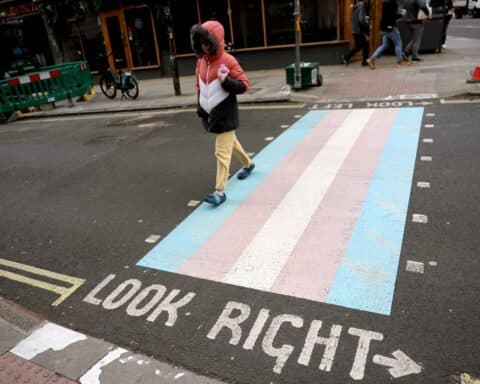In the current cultural debate over gender, we expect to hear, in response to Biblical or scientific claims that we humans are created male and female: “First of all, intersex people exist.” This is, of course, straightforwardly true. Who would deny it? The problem is, paraphrasing the most famous quote from “The Princess Bride,” this claim does not mean what the people using it think it means.
The basic debate here is not actually about intersex conditions, but about claims that biology is not determinative for gender identity. Such claims rely on deconstructing the basic, biologically rooted categories of male and female. Invoking intersex conditions serves this purpose by implying that, even before we get to the question of gender, biological sex is not nearly as binary as we imagine.
If having an XY chromosome pairing makes one a male while an XX pairing makes one female, we are asked, what shall we say about someone with an XXY genotype? And it gets messier. There are men with an XX genotype and women with an XY. Such diversity is presented as undermining the biological sex binary. But does it?
We know that someone with an XXY genotype (Klinefelter syndrome) is a man and not something else. And the simple fact that we can say there are men with an XX genotype means that we know exactly what a man is. Even absent the typical male XY chromosome pairing, we can identify a male. How?
What does it mean to be male or female?
As biological categories, male and female are not about external genitalia. Nor are they even about chromosome pairings. These are usually helpful rules of thumb, but they are not determinative, so ambiguity here is not determinative either. Being male or female means having a body ordered to produce either small or large gametes — sperm or eggs. And this is true whether or not the body achieves that goal. Sterility does not make a person — with or without an intersex condition — any less a man or a woman.
Even when identification is complicated, people with intersex conditions are not something other than male or female. There is no third sex, and no human individual can both father and mother a child. These people are simply atypical representations of their sex. Surely there should be room in our contemporary categories for such a possibility. But there is, in fact, a much bigger problem with the suggestion that the existence of intersex people or conditions undermines a male-female binary: a trans claim is, in an important way, the very opposite of an intersex condition.
By definition, intersex conditions are biologically and medically identifiable. They may occur at many levels — genital, chromosomal, hormonal — but they always contain something we can physically discern. A typical trans claim, on the other hand, insists that whatever is measurable to outside observers is irrelevant, and that the only factor that matters in making a gender determination is an internal felt sense, by definition inaccessible to others. Appeals to biology are dismissed as essentialist and reductive.
But if appeals to biology are essentialist and reductive, how can appeals to (biological!) intersex conditions undermine a gender binary? Biology is either determinative for gender or it is not.
Brain sex theory and trans identity
This same confusion is present in the so-called “brain sex theory.” According to this widespread popular explanation of trans identities — it shows up, for instance, in celebrity trans kid Jazz Jennings’ book for children — a trans person has a female brain in an otherwise male body or vice versa. But this is a shell game.
For starters, we can imagine the response if a brain scan for a trans-identifying child, like Jazz, showed a brain typical for that child’s biological sex. In any case, the scientific evidence for this claim is weak at best. But even if it were stronger, there is an underlying philosophical error at work. Brains are not genitals. There may be differences on average between male and female brains, but they are not different organs. And even if they were, it is not clear why the presence of one body part trumps the presence of another. Why does it make more sense to describe a given individual as a woman with a penis rather than a man with a female brain?
What is perhaps worse than introducing such confusion is that asserting “intersex people exist” in this context instrumentalizes the lives and experiences of intersex people. Indeed, groups representing people with intersex conditions have been keen to point out that trans identity is importantly different from such conditions. And this remains true even if some people with intersex conditions identify as trans.
Of course, none of this is meant to short-circuit the important conversation the Church needs to have about the pastoral care and accompaniment of people struggling with questions of gender identity. Critiquing weak analogies is not the same as criticizing people, let alone “denying their existence,” as is often claimed. But there is no real way forward while we mischaracterize the situation for rhetorical and political purposes.





